How We Test Mattress Toppers – Homes & Gardens' Expert Review Process Explained
Here's everything you need to know how we test mattress toppers for pressure relief, thermoregulation, motion isolation, and edge support
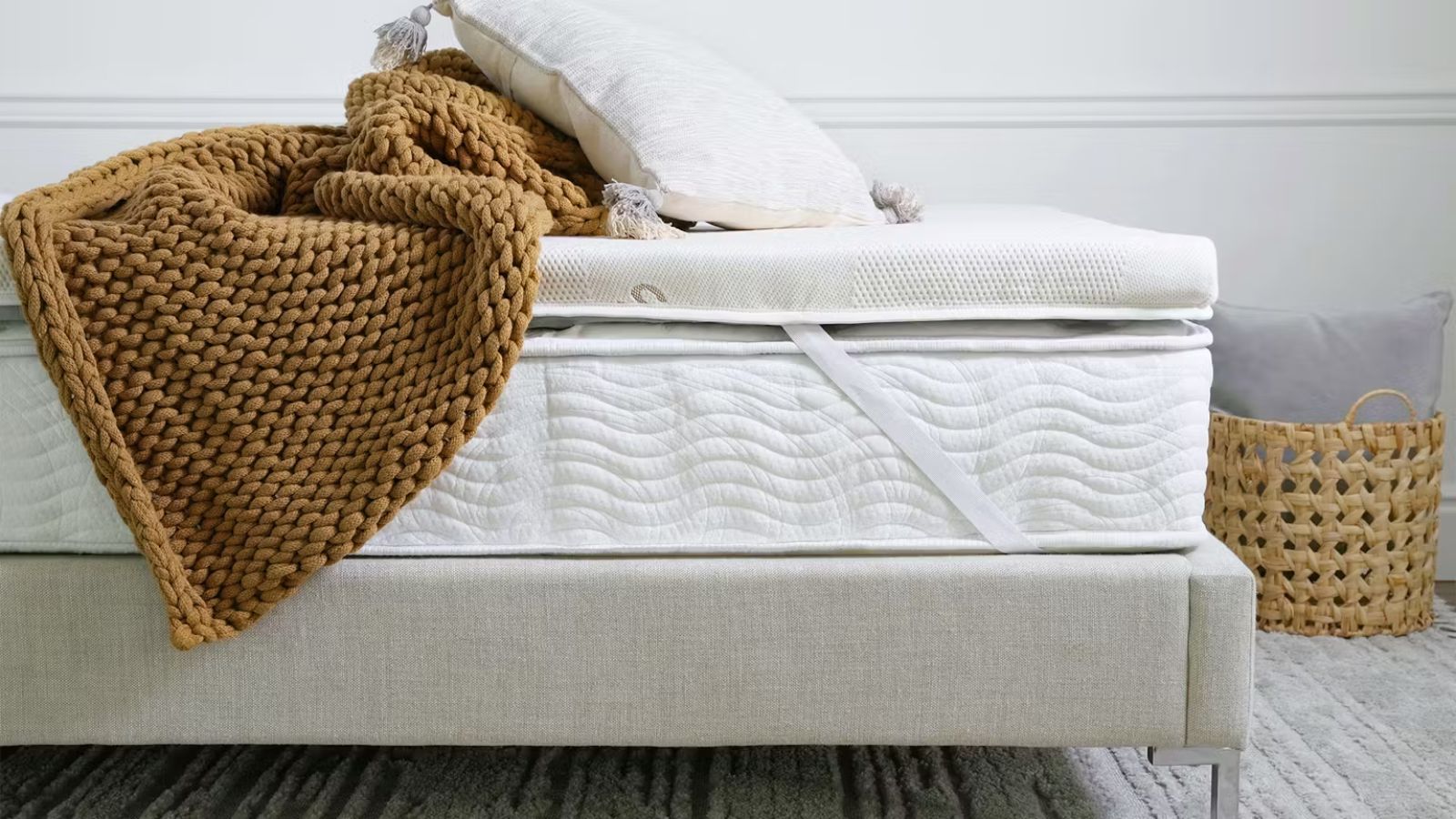

How we test mattress toppers at Homes & Gardens is very transparent: as Sleep Editor, I ask a team of hugely experienced mattress topper testers from across the country – you can meet them below – to sleep at home on the latest offerings from the most trusted brands for 30 nights each, and then to report back on their findings.
Before I assign a topper to a tester, I carefully match them to the right person to ensure they solve the problem their manufacturers claim they do: cooling toppers for hot sleepers, softer toppers for side sleepers, and so on.
As a team of testers, we represent a wide range of body types, ages, and sleep styles, and most of us sleeps with a partner, who also feed into our reports, so you should be able to find someone who sleeps like you.
And of course, I ask our testers to check online reviews from competitor sites, and from customers who have already bought and slept on the toppers to ensure no stone goes unturned.
For the sake of a fair fight, we assess each mattress topper against the same criteria: pressure relief; thermoregulation; motion isolation; and edge support.
We also consider the practicalities, including how well the topper fits the mattress and how easy it is to clean, as well as warranties, delivery, and the all-important price.
A mattress topper must perform well in all categories, or excel to make up for its shortcomings, to be counted amongst the best mattress toppers.
Design expertise in your inbox – from inspiring decorating ideas and beautiful celebrity homes to practical gardening advice and shopping round-ups.
Pressure Relief
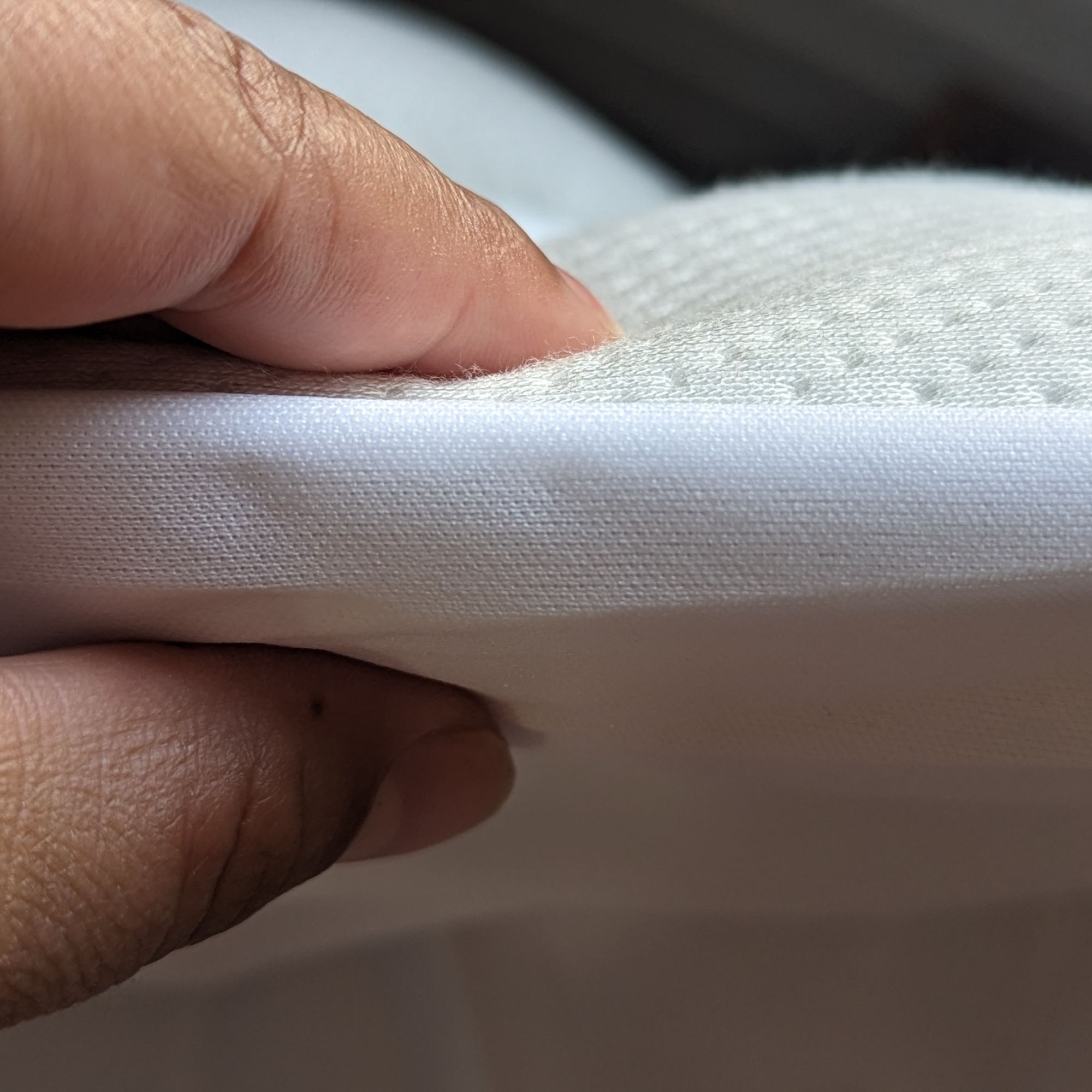
Tester Alex Temblador assesses the Helix Plus mattress topper
We assess pressure relief by lying awake on the topper and switching between our front, back, and side. The ideal mattress topper is the one that keeps your spine straight, taking the pressure off your joints while stopping you from sinking too far into the surface. We consider which position feels most comfortable, scoring out of five.
That's just an initial impression. Then we sleep on the toppers for the month-long period, taking our main sleep position, and the pressure points that might exacerbate, into account.
For example, a side sleeper might find a medium or medium-soft mattress topper offers good pressure relief, but if the topper is too firm or too thin, they would suffer pressure issues around the shoulders and hips.
Equally, a soft mattress topper will feel insufficiently supportive for a back or stomach sleeper, causing pressure problems in their back and neck.
As I said above, a topper's thickness is as important as its firmness. As a general rule, a thicker topper will feel softer, and a thinner one will feel firmer. In the absence of an industry-standard measurement of mattress firmness, we rate each mattress topper ourselves on a scale from Soft to Medium to Firm.
How firm a topper feels is also influenced by the mattress underneath it, and we take that into account too. A slow-moving memory foam mattress topper could counterbalance a firm, inflexible mattress. A firm topper, made from latex or high-density memory foam, could toughen up a soft mattress, but it's no long-term solution for a sagging, aging mattress.
Thermoregulation
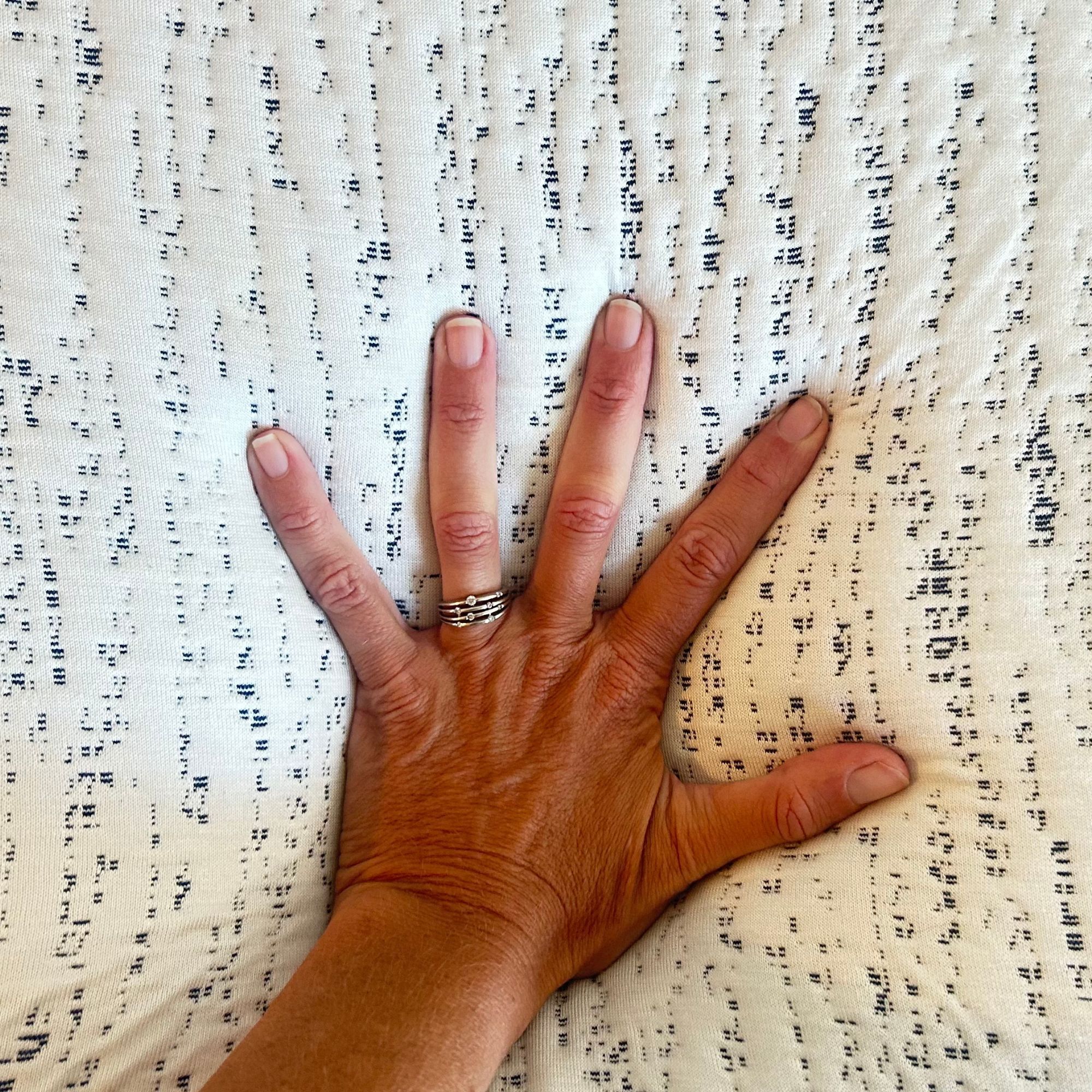
Tester Meg St-Esprit tests the Viscosoft high density mattress topper
We assess thermoregulation by paying attention to how our body temperature changes in the night, taking into account the time of year and the temperature in the bedroom, noting any changes, and comparing them with toppers we have tried before.
We even switch off our AC and sleep through heatwaves and hot nights, making note of any times we wake up in a sweat.
In our search for the best cooling mattress toppers, we also consider the science of the materials. We scour the specifications for mentions of gel-infused memory foam, ventilated foam, or cooling covers that incorporate bamboo, TENCEL, phase change material (PCM), and the like. As a general rule, natural fibers, such as latex, tend to be more breathable than synthetic substances, such as memory foam.
Still, we won't take the manufacturer's word for it. The whole point of our mattress topper testing process is to see, by sleeping on them for a whole month, whether these claims stand up to scrutiny.
Motion Isolation
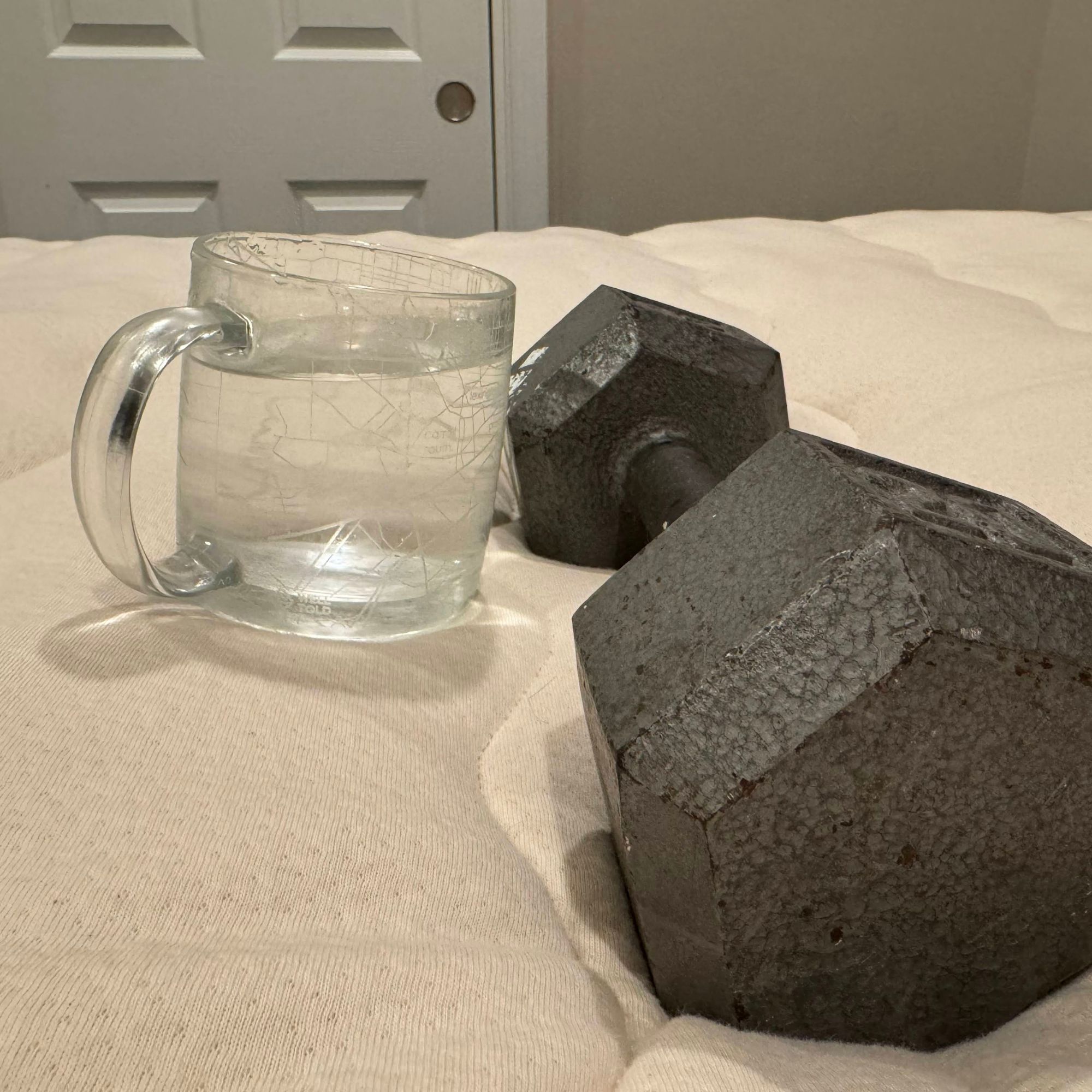
Tester Jamie Davis Smith performs the motion isolation test on the Saatva Organic Quilted Mattress Topper
To measure motion isolation, we fill a glass with water and set it on the topper. Then, we apply pressure across the topper, moving closer to the glass. The more the glass moves, and the more water spills, the worse the motion isolation, and the less suitable the topper for couples and light sleepers.
Then of course, we test out the motion isolation further by using the toppers for a month, noting whether we are more or less disturbed by our partners, kids and pets, and we ask our partners for their experiences, too.
Memory foam mattress toppers tend to have the best motion isolation, since foam is made to absorb movement, while latex toppers are springy and responsive. Then again, if you're looking for a mattress topper with a bit of bounce to counterbalance a firm, inflexible mattress, you might not mind a bit of motion transfer: it's a matter of personal preference.
Edge Support
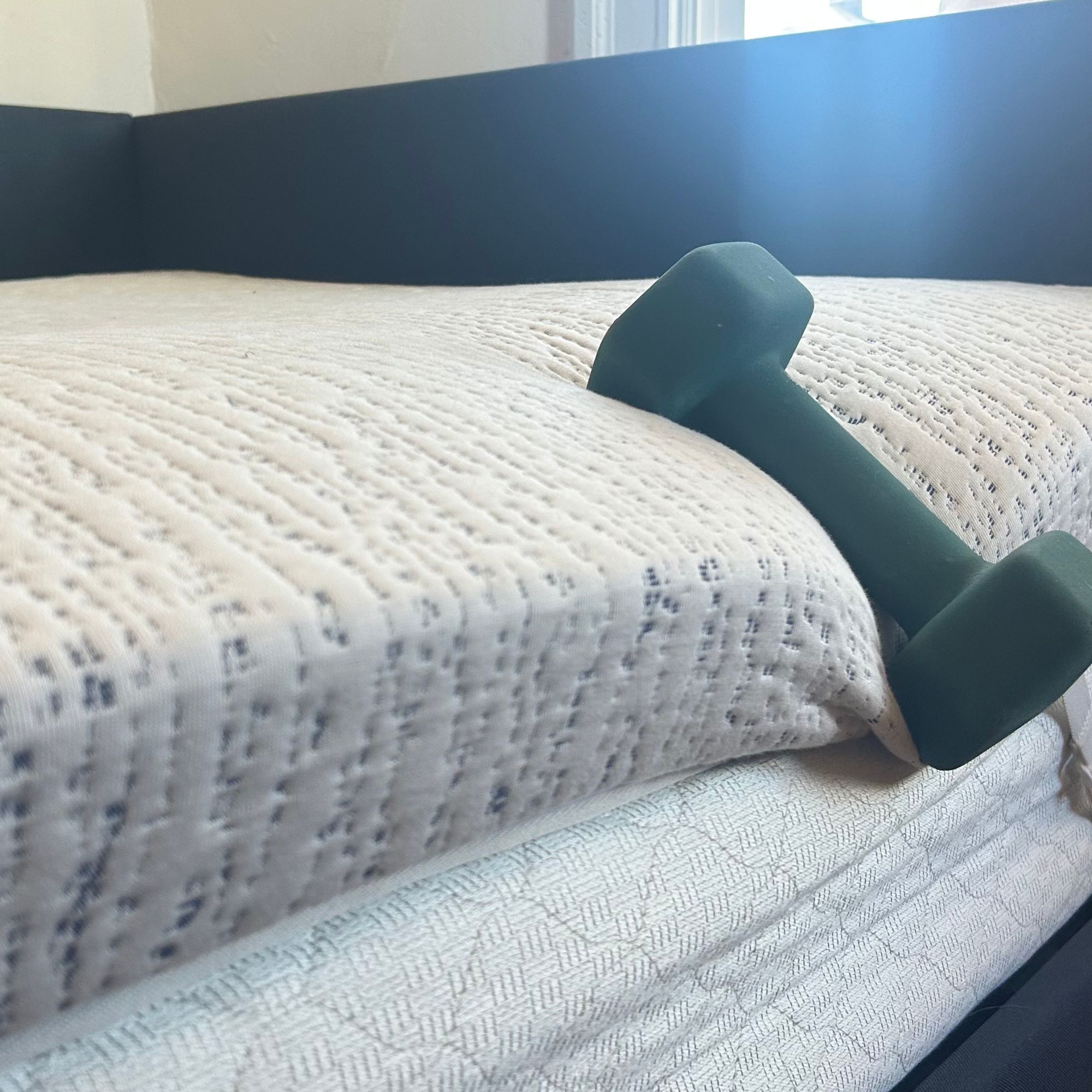
Tester Meg St-Esprit tests the edge support of the Viscosoft high density mattress topper
To assess edge support, we sit on the side of the topper and measure how far we sink. The further we fall, the worse the edge support, and the harder it might be to get into and out of bed.
We might use the same weight-and-water-glass combination from the motion isolation test to reinforce our findings, moving them to the edge of the mattress topper and measuring how much, if any, water spills.
A mattress topper with good edge support makes it easier to get into and out of bed, which is particularly important for anyone who struggles with mobility. It should also feel more comfortable to sit or sleep on the side of the topper: good news for anyone who needs to nurse a baby in the night or get dressed from bed in the mornings.
Practical Points
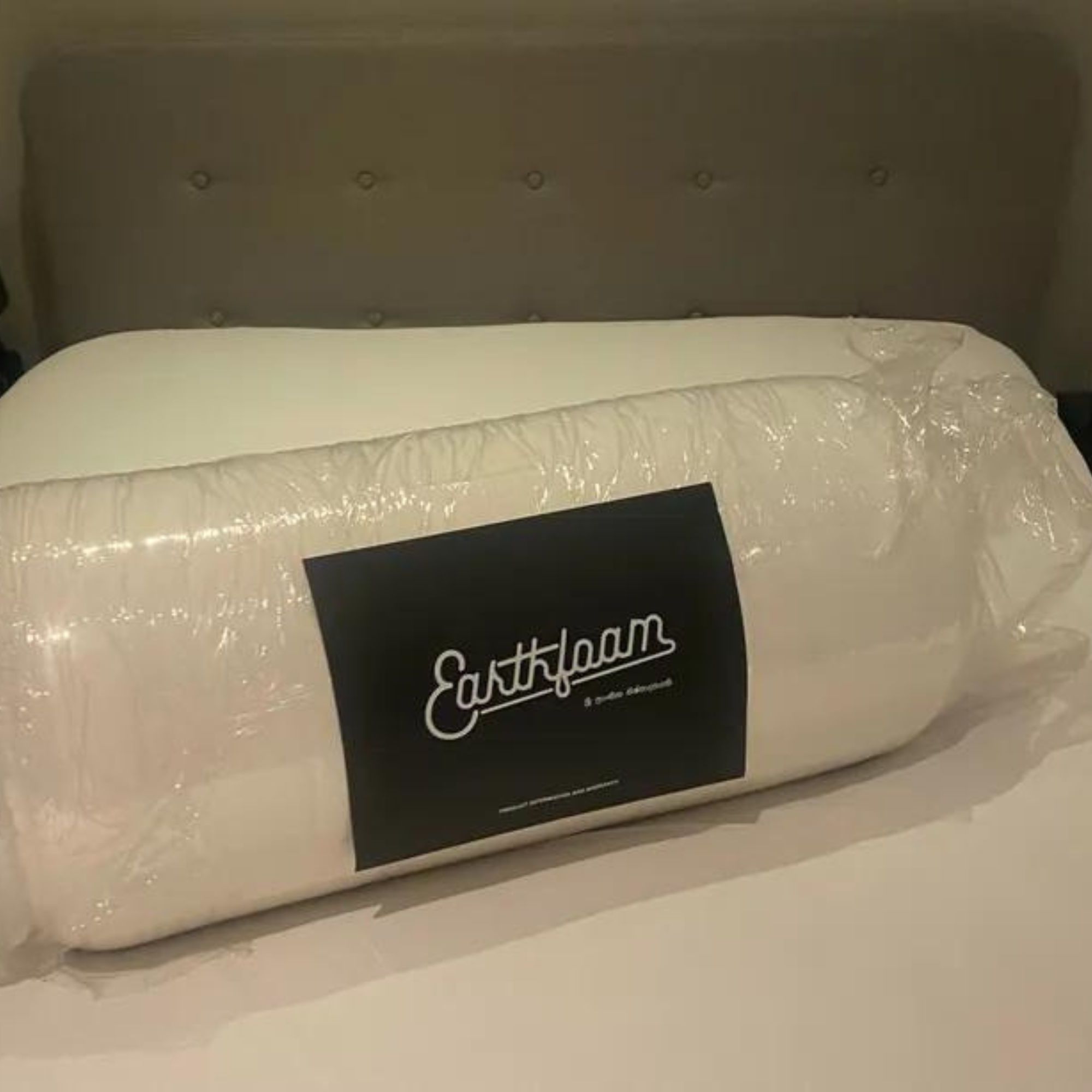
Tester Louise Oliphant takes delivery of the Earthfoam mattress topper
Slippage: One of the most important tests for a mattress topper is purely practical: does it stay on the mattress? Ideally, we're looking for sturdy corner straps for a snug, secure fit, but we'll settle for a grip pad on the underside of the mattress topper. If a mattress topper keeps sliding from side to side, and we keep having to adjust it in the middle of the night, that's proof it isn't fit for purpose.
Cleaning: We're also interested in the ease of cleaning. A mattress topper with a removable, machine-washable cover will score highest in this category. We'll make note of the length of the mattress topper warranty as an indication of durability, as well as any mattress topper sleep trials that allow you to test the topper at home before you commit to your purchase.
That chemical smell: Most mattress toppers arrived plastic-wrapped and vacuum-packed in cardboard boxes, delivered to your door. Sometimes, as we unbox our toppers, we notice a chemical smell. That's a tell-tale sign of the mattress off-gassing, releasing VOCs into the air as it inflates to full size.
For the most part, the smell is completely harmless, but it is unpleasant. We've learned to leave our toppers for at least 24 hours before we try to sleep on them, closing the door to the testing room and cracking open a window to let the smell out.
Verified customer reviews: Where possible, we like to compare our findings against verified reviews. It's the quickest way to pick up common customer concerns. That's why it's important for our testers to read as many reviews as possible, without being taken in by a few five-star ratings or put off by a smattering of more mixed reviews.
Price vs Value for Money
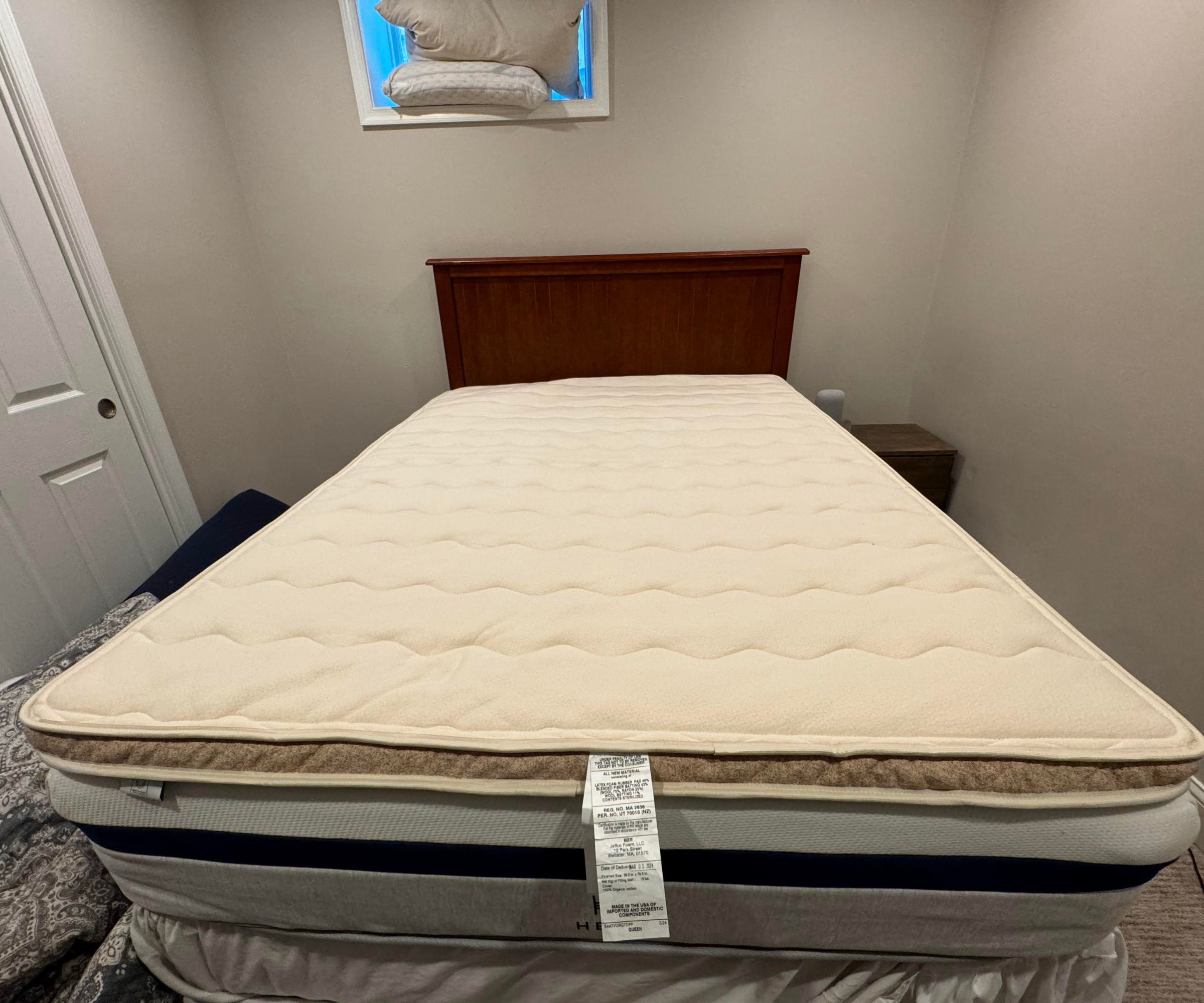
Tester Jamie Davis Smith gets ready to test the Saatva Organic Quilted Mattress Topper on her bed
We consider our findings against the cost of the mattress, factoring in sleep trials and delivery charges, to help you determine value for money.
At the end of each review, we take stock of our results and bring it all back to the price of the topper. In our time, we've tested some seriously luxe models (the most expensive is the Saatva Organic Quilted Mattress Topper), as well as some more affordable options, such as the ViscoSoft Active Cooling Copper Topper.
It wouldn't be fair to rank an outstanding affordable topper below a more expensive option just because it's missing a few special features. That's why we compare the price of a mattress topper against its performance to rate it on its own terms. For a good price, we might forgive, but still mention in our reviews, a few minor faults in motion isolation or edge support, for example.
We test mattresses just as thoroughly as we test mattress toppers. And don't forget, before you buy a mattress topper, do check the returns policy. That way, if it doesn't suit you, you are most likely able to return it with no issues.
Our topper testing panel

Meg is one of our regular freelance product testers. She likes a firm mattress to ease her chronic lower back pain and take the weight off her joints. Her review of the Helix ErgoAlign Mattress Topper is one of her latest testing jobs.

Alexandra is one of our freelance reviewers, whose work features in TechRadar and Top Ten Reviews. As a side sleeper, Alexandra needs a topper that's soft yet supportive to keep her hips and knees in line with her neck and shoulders. As a restless sleeper who shares a bed, she looks for excellent motion isolation to help her partner sleep undisturbed.

Jamie is one of our freelance reviewers. She's tested three toppers for Homes & Gardens, including two made from organic latex, but this memory foam model is her favorite. As a back and stomach sleeper, Jamie appreciates a firmer surface to keep her spine straight.

Louise is our former Sleep Editor. In her time at Homes & Gardens, she tested all manner of mattresses, toppers, pillows, and bedding. As a side sleeper, Louise needs a mattress topper that's firm enough to support her spine yet soft enough to cushion her joints.

Kaitlin is one of our freelance reviewers, whose work features in Architectural Digest, Vanity Fair, Martha Stewart Living, and more. As a short-term rental host, Kaitlin is looking for a mattress topper to suit all sleep styles and accommodate all her guests. As a hot sleeper hosting through the summer, Kaitlin needs a topper to keep herself and her guests cool.

Emilia is our resident sleep writer. She spends her days tracking down the lowest prices on the best mattresses and bedding and spends her nights testing them out from the comfort of her own home. Emilia leads a team of testers across America to find the best mattress for every sleep style, body type, and budget.
Emilia's quest to learn how to sleep better takes her all around the world, from the 3Z mattress factory in Glendale, Arizona to the Hästens headquarters in Köping, Sweden. She's interviewed luxury bedding designers at Shleep and Pure Parima, as well as the Design Manager at IKEA. Before she joined Homes & Gardens, Emilia studied English at the University of Oxford.